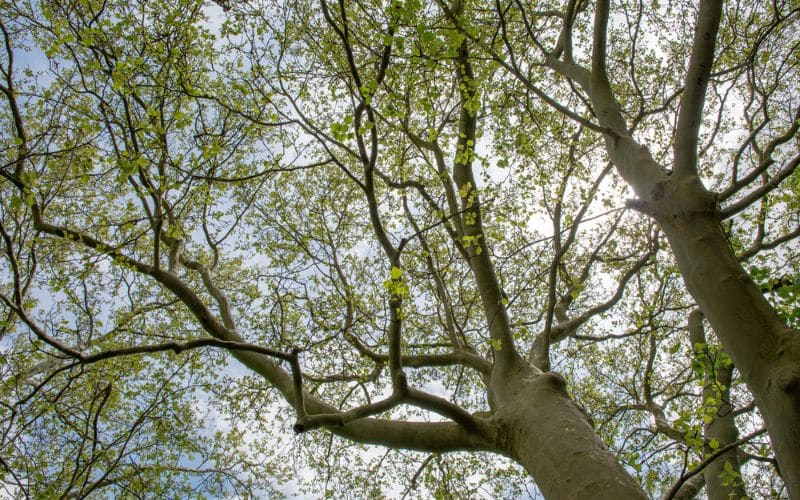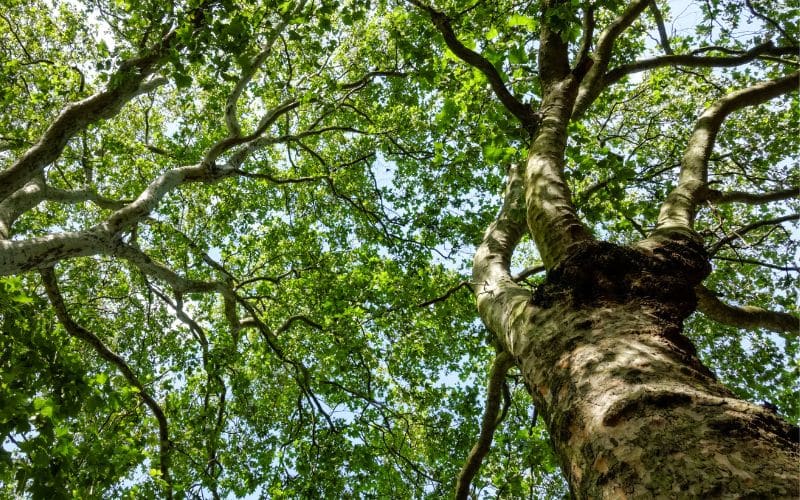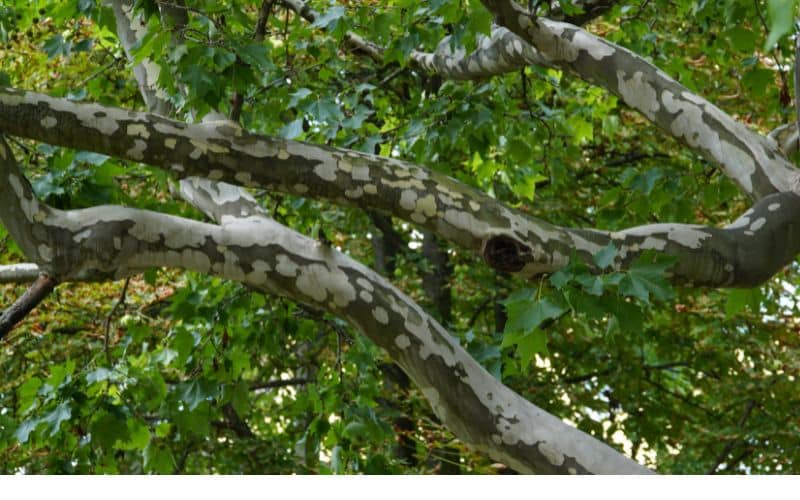
The Rise of the London Plane Tree in Ontario
Ontario is experiencing a green renaissance, and at the heart of this transformation is the London Plane Tree, also known by its scientific name, Platanus x Acerifolia. This isn’t just any deciduous tree that you might pass without a second glance. No, the London Plane Tree is a showstopper, capturing attention with its resilience, adaptability, and undeniable charisma. It’s a tree that not only beautifies our streets and parks but also contributes to the environmental health of our communities.
What Makes Platanus x Acerifolia Unique?
If trees had personalities, the London Plane Tree would be the life of the party. It’s a hybrid, born from the union of the American Sycamore (Platanus occidentalis) and the Oriental Plane (Platanus orientalis). This fusion has bestowed upon it a set of unique traits that set it apart from its arboreal peers. One of its most striking features is its bark— a patchwork quilt of colors that peels away to reveal a creamy, almost luminous underlayer. This isn’t just for show; this unique bark helps the tree shed pollutants from its surface, making it a perfect fit for urban landscapes.
Why is the London Plane Tree So Popular in Ontario?
The London Plane’s adaptability to pollution and various soil types makes it a popular choice for urban planners in Ontario. Its pyramidal shape when young, which rounds out as it matures, adds aesthetic value to streets and parks.
Understanding the London Planetree’s Hardiness Zones
This tree is a tough cookie, thriving in USDA hardiness zones 5 through 9, which makes it well-suited for Ontario’s climate. It’s a tree that asks for little but gives back a lot, especially when it comes to improving air quality.

How Mature Does a London Plane Tree Get?
A mature London Plane can reach heights of up to 100 feet, with a canopy spread that’s equally impressive. Its grandeur is not just in its size but also in its ability to provide ample shade, making it a beloved fixture in many a park.
The Different Cultivars of London Plane Trees: Which One is Right for You?
Thinking about adding a dash of arboreal elegance to your property or community space? The London Plane Tree offers not just one, but several cultivars, each with its own unique set of attributes. Whether you’re looking for a tree that’s particularly resistant to diseases like anthracnose or you’re enamored with a specific growth habit, there’s likely a London Plane cultivar that’s tailor-made for your needs. From the towering ‘Bloodgood’ known for its rapid growth to the compact ‘Metzam,’ which is ideal for smaller spaces, the options are as diverse as they are captivating. So, before you make your pick, take some time to explore these cultivars. Your perfect tree match is out there, just waiting to root itself into your life.
How to Prune Your London Plane Tree for Optimal Health
Pruning is essential for any tree, but for the London Plane, it’s about more than just aesthetics. Proper pruning helps the tree maintain its health and vigor. Always remember to remove dead or diseased branches to allow for new growth.
The Environmental Benefits of Planting London Plane Trees
Beyond their beauty, these trees are environmental warriors. Their leaves and bark absorb pollutants, making them an excellent choice for improving air quality in urban areas.

Common Pests and Diseases: What to Watch Out For?
While generally robust, the London Plane is not entirely immune to pests and diseases. Watch out for anthracnose and powdery mildew, both of which can be managed with proper care.
The London Plane Tree and Urban Planning: A Match Made in Heaven?
Given its resilience and minimal care requirements, the London Plane is a favorite among urban planners. Its ability to withstand pollution and adapt to various soil types makes it an ideal choice for city landscapes.
Conclusion: The Future of Acerifolia in Ontario’s Green Spaces
The London Plane Tree, or Platanus x Acerifolia, is more than just a pretty face in Ontario’s urban forests. Its resilience, adaptability, and environmental benefits make it a tree worth celebrating. As we look to the future, it’s clear that this sycamore star will continue to play a significant role in making Ontario’s cities greener, cleaner, and undeniably more beautiful.
There you have it—a deep dive into the captivating world of the London Plane Tree. Whether you’re an arborist, a casual tree lover, or someone who enjoys a leisurely stroll through the park, it’s hard not to fall in love with this arboreal gem. So the next time you’re out and about, take a moment to appreciate the London Plane Trees around you. They’re not just trees; they’re a testament to nature’s brilliance and our ongoing efforts to create sustainable, livable cities.
And that wraps up our journey through the world of Platanus x Acerifolia. Here’s to greener, more vibrant cities, one London Plane Tree at a time!








